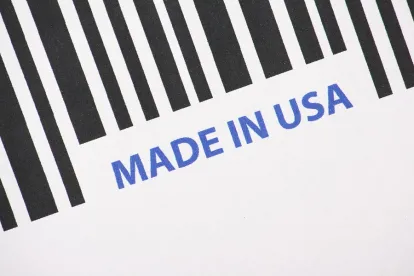Last month, I offered the first in a series of blog posts that attempt to simplify the various laws that are often described as a single law: “Buy America,” “Buy American,” “Made in the USA,” “Made in America,” and “Build Back Better.”
First, I want to return to the cliffhanger from the last post:
Did you know that George Washington wore a brown suit to his inauguration? Washington did not want to wear a military uniform. He also did not want to wear a civilian suit that was made anywhere but the United States.
Question: Where do you find a suit in 1789?
Answer: You ask Henry Knox, your Secretary of War, to get it for you of course.
Question: Where did Knox get the suit from?
Answer: The Hartford Woolen Manufactury after Washington wrote to Knox on January 29, 1789, and suggested he go to Hartford, Connecticut, “where I perceive a Manufactury of them is established.”
Economic nationalism has existed since the founding of the country. Two of the more well-known nationalist policies are “Buy American” and “Buy America.” Yes, these are two different laws that have different requirements.
“Buy American” was passed by Congress in 1933 and signed by President Hoover during his last day of office. It applies to all purchases of goods by the U.S. federal government valued at more than $10,000. The law requires that such goods purchased be produced in the U.S. although the requirement may be waived under certain circumstances.
“Produced in the U.S.” = 100% manufactured in the U.S. with a set percentage of the cost of components coming from the U.S.
Historically, the set percentage of cost of components was 50%, but things have changed over time:
-
Raised to 55% in 2021
-
Raised to 60% in October 2022
-
Set to increase to 65% in 2024 and 75% by 2029
-
In contrast, the “Buy America” Act was a provision of Surface Transportation Assistance Act of 1982. It relates to mass transit related procurements that are funded at least in part by federal programs. The Buy America Act bars the award of federal financial assistance for infrastructure unless all of the iron, steel, manufactured products, and construction materials used in the project are produced in the U.S.
For Iron and Steel Products:
-
“Produced in the U.S.” = All manufacturing processes, from the initial melting stage through the application of coatings, occurred in the United States.
For Manufactured Products:
-
“Produced in the U.S.” = (1) the product was manufactured in the United States; and (2) the cost of the product’s components mined, produced, or manufactured in the United States exceeds the required percentage of the total cost of the product’s component.



 />i
/>i

